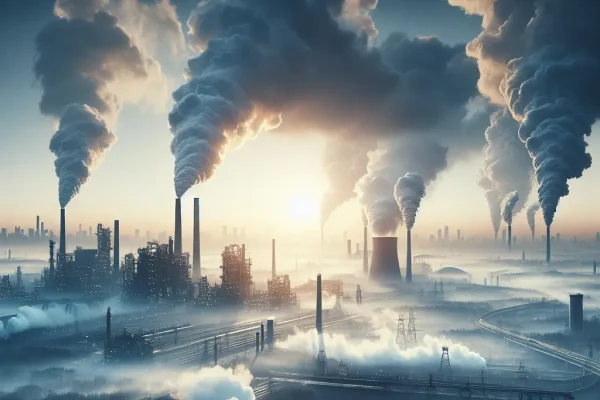Millions have unknowingly suffered—and died—because just a handful of oil companies pumped out pollution that fueled one in four deadly heat waves. This staggering revelation comes as global temperatures soar, forcing governments, activists, and ordinary citizens to confront the fossil fuel industry’s outsized role in today’s climate disasters. As lawsuits and radical climate action gain momentum worldwide, it’s time to look under the hood at the shocking big oil emissions impact on heat waves and what that means for all of us.
The Problem: How Big Oil Drives Deadly Heat Waves
For years, advocates have argued that fossil fuel companies have an outsized responsibility for climate change, but new science puts numbers to these claims—a quarter of all major heat waves since 2000 can be attributed directly to emissions from just 88 major oil, gas, and coal producers (The Guardian, June 2024; Reuters, June 2024).
Fossil fuel companies’ climate change responsibility has often been shrouded in complex legal and political debates. But advances in climate attribution science now show the direct oil industry contribution to extreme weather:
- Just 25 fossil fuel giants are responsible for over half the sector’s emissions since 1965.
- The oil and gas sector contributed about 22% of global temperature rises since 2000, pushing modern heat waves into ever-deadlier territory (Nature, June 2024).
- Big oil emissions and deadly heat waves are inextricably linked—with heat-related deaths rising sharply alongside record profits.
Put simply, when we ask, “What percentage of heat waves are caused by big oil?” the answer is jaw-dropping: one in every four major heat-wave days is linked back to pollution from fossil fuel majors (The Guardian).
How Does Oil Company Pollution Cause Global Warming?
When oil companies extract and burn fossil fuels, they emit vast amounts of carbon dioxide (CO2) and methane, trapping heat in the Earth’s atmosphere. Over decades, cumulative emissions have acted like a thickening blanket, supercharging the frequency and intensity of heat waves across continents.
Why Big Oil’s Heat Wave Impact Matters—And Who Pays the Price
The surge in oil emissions and deadly heat waves isn’t just an environmental story—it’s a story of people, economies, and political stability. Extreme heat is the world’s deadliest weather hazard, killing more people annually than hurricanes, floods, or earthquakes.
- Public Health Crisis: Hospitals overflow as heat strokes and dehydration spike during increasingly frequent extreme heat events. Europe’s 2022 heatwave killed an estimated 61,000 people (The Guardian).
- Economic Disruption: Lost productivity, agricultural collapse, and power outages cost billions. Supply chains buckle under the stress.
- Geopolitical Tensions: As food and water shortages intensify, mass migrations and political unrest follow—much of it disproportionately affecting vulnerable communities least responsible for emissions.
This is about more than warming oceans and melting ice. Heat-induced disaster zones radiate across sectors—jobs, public safety, insurance, agricultural production, and city planning all hang in the balance.
Expert Insights & Data: The Hard Numbers Linking Oil Emissions and Heat Waves
So, how strong is the science behind the connection? Consider these recent studies and expert takes:
- A team of researchers, led by Dr. Friederike Otto (Imperial College London), found that, since 2000, emissions traced to major fossil fuel producers were responsible for at least 21–26% of the severity and frequency of global heatwaves (Nature, June 2024).
- The study quantifies corporate accountability for climate disasters for the first time, giving legal ammunition to communities suffering—and paving the way for lawsuits targeting oil majors for heat-related deaths and infrastructure damages (Reuters).
- The Guardian reported that more than 8,000 heat-related deaths in the last decade can be attributed to fossil fuel-driven, human-caused warming.
“The direct contribution of major fossil fuel producers to deadly heat is now undeniable. The moral and legal implications are enormous.” – Dr. Friederike Otto, lead study author
Infographic Idea: Heat Wave Deaths Attributable to Big Oil (2000–2024)
Chart: Number of heatwave deaths per year globally, with a highlighted section showing the estimated proportion linked to emissions from major oil companies.
The Future Outlook: Can New Policies Reduce Oil Industry Emissions & Prevent Disasters?
As the science sharpens, so do calls for new policies to reduce oil industry emissions. Climate litigations targeting oil multinationals are ramping up across the U.S., Europe, and Global South, aiming for not just financial compensation but court-mandated emissions cuts.
- Litigation Momentum: Recent court filings demand that oil majors pay for local cooling centers, heat-resistant infrastructure, and medical support in heatwave-prone zones.
- Corporate Action: Some oil giants pledge “net zero” by 2050. Critics argue these promises fall short unless they rapidly slash production today.
- Global Policy Pushes: Upcoming COP summits may spotlight mandatory emissions disclosures and phase-out timelines for fossil fuels—potentially shifting trillions from oil to renewables.
Risks & Opportunities: 2025 and Beyond
- Risk: Delayed action could push vast swathes of the globe to near-unlivable heat levels by 2030 (IPCC Special Report).
- Opportunity: Aggressively targeting oil sector emissions could save millions from heat deaths, create green jobs, and stabilize fragile economies.
Case Study: Country-Level Exposure to Big Oil’s Heat Wave Impact (Table)
| Country | Recent Major Heatwave(s) | % Attributed to Big Oil Emissions* | Estimated Heatwave Deaths (2020-2023) |
|---|---|---|---|
| United States | Pacific Northwest, 2022 | 23% | 1,200+ |
| India | Delhi/North India, 2023 | 25% | 2,000+ |
| France | Record summer, 2022 | 21% | 5,000+ |
| Australia | Eastern states, 2019–20 | 24% | 400+ |
| Egypt | Cairo, 2021 | 26% | 350+ |
*Based on attribution studies cited above; numbers rounded for clarity.
Related Links
- [External: MIT Explainer: Extreme Weather & Climate Change]
- [External: NASA: Climate Change & Extreme Heat Events]
- [External: WSJ: Oil Companies Face Wave of Lawsuits Over Climate Change]
FAQ: Big Oil Emissions, Heat Waves, and Accountability
What percentage of heat waves are caused by big oil?
Recent studies attribute approximately 21–25% of major heat waves since 2000 to emissions from the largest fossil fuel producers (Nature, 2024).
How does oil company pollution cause global warming?
Burning oil releases CO2 and methane. These greenhouse gases trap heat in Earth’s atmosphere, leading to global warming and more extreme heat waves.
Can new policies reduce oil industry emissions?
Yes. Stronger policies—like mandatory emissions cuts, rigorous corporate accountability for climate disasters, and accelerated renewable energy adoption—can substantially reduce oil sector emissions.
What evidence exists linking oil emissions and deadly heat waves?
Peer-reviewed research in Nature (2024) and coverage from Reuters and The Guardian have quantified the direct connection between oil emissions and recent heatwave disasters.
Conclusion: The Case for Corporate Accountability—and Urgent, Collective Action
The link between big oil emissions and deadly heat waves is no longer speculative. It’s causal, quantifiable, and—perhaps most disturbingly—avoidable. As new science exposes the oil industry contribution to extreme weather, calls for robust corporate accountability, legal redress, and transformative policy reform are gaining force worldwide. Our next summer doesn’t have to be deadlier—if we act now, demand accountability, and build a future beyond fossil fuels. Big oil’s emissions aren’t just fueling heat waves—they’re fueling a global movement for justice.

